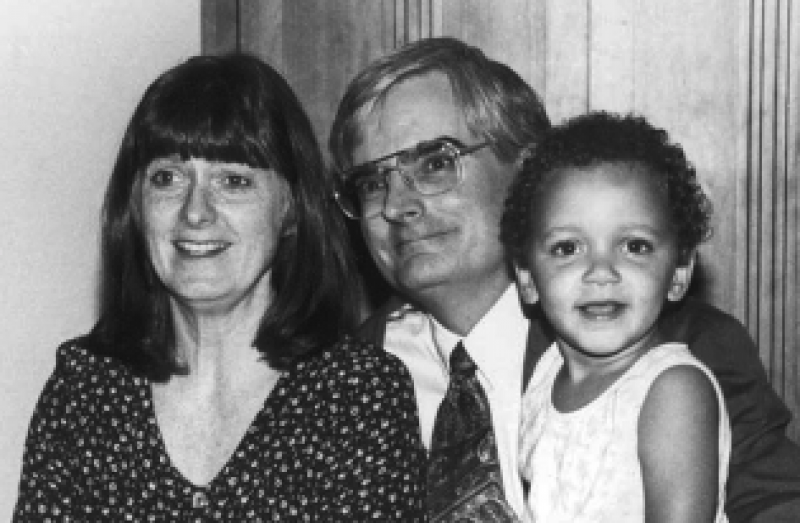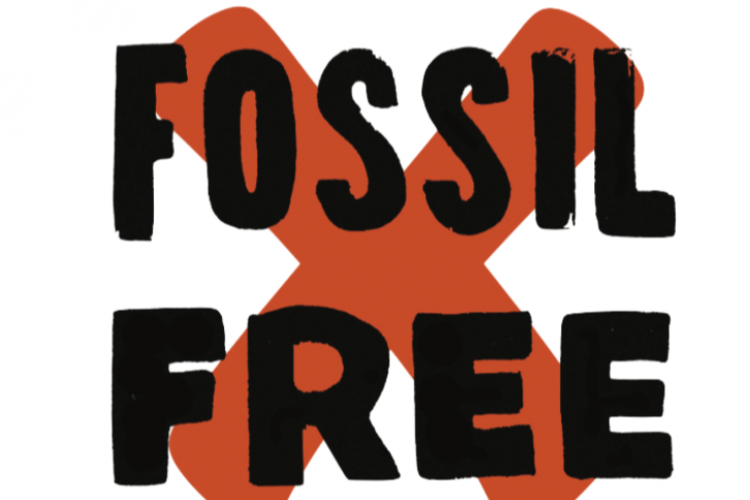Adoption: An Option for Friends

This article was created by QEW’s Population Working Group and is part of our “Pamphlets for Sharing” series, essays on important topics researched, written, and edited using Quaker discernment and decision-making. We hope you use them as an educational tool with your community. Download the PDF here or order print copies by emailing info@quakerearthcare.org.
Do you have a lot of love to give to children and don’t want to add to Earth’s population? Have you considered adoption?
As Friends make life choices, they seek Divine Guidance in what they do. Adoption is a deeply personal choice and commitment for life, made with careful searching and for many reasons, whether to complete a family or to provide loving care for one or more children. Adoption provides a way for large numbers of children to find loving homes. Some Friends have considered adoption as part of their care for the Earth and concern over a growing world population. Parents raising one or two biological children can have more children through adoption without adding to the Earth’s population.
“We are an adoptive family by domestic private adoption. We advertised in local papers, and our daughter’s birth mother responded (as well as 35 other women). Attorneys took over the legal aspects while we focused on having a relationship with the birth-mom. Our daughter was born one month later; she came home with us from the hospital. She is our child fully, and over the years we have had a connection with the birth-mom and her extended family. At times the birth-mom wanted to assert her “mom-ness,” and we have had to set limits. It is like many family situations where you love your family and still have to say “no.”
Our lives and our daughter’s life have been richer with this extended family. We have consciously sought out relationships that gave our daughter contact with people of African-American heritage because of her own biracial identity. At 16, our daughter located her birth-dad’s family. They have welcomed her and us into their homes and hearts. We have the same love and struggles of any family. Adopting our daughter was the best decision we have ever made.”
—Susan Smith, Homewood Friends Meeting, Baltimore
Adoption in the United States
Of nearly 65 million U.S. children under 18 years in 2010, 1.5 million (2.4 percent) were adopted. (1) The number of children placed for adoption in the U.S. has decreased. In 2012, approximately 120,000 children were adopted in the United States, down from 140,000 in 2008. The adoption rate (per 100,000 persons 18 years and older) was 65 in 2001, 60 in 2008, and 49 in 2012. (2)
The reasons for this decline in the adoption rate include better access to contraception, availability of abortion, and social acceptance of single parenthood. Before 1973, nine percent of babies born to never-married women were placed for adoption, compared to less than one percent from 1996 to 2002. (3)
International Adoptions
Children are available for adoption from other countries. The number of children from other countries adopted by U.S. citizens increased rapidly from 7,100 in 1990 to 19,600 in 2001. The number peaked at nearly 23,000 in 2004 and has declined since—there were 5,370 adoptions from other countries in 2016. (4)
To regulate intercountry adoption, the Hague Convention was drawn up on 29 May 1993 to ensure that the best interests of the child are met, that the child is adoptable, and that the prospective parents are suitable. Standards were set in regard to consents and payments. In the U.S., international adoption is facilitated by the Child Citizenship Act of 2000. is provides that immigrant children automatically become citizens as soon as their adoption is final. (5)
Adoption and Foster Care
Still there are thousands of children available for adoption, ranging from infants to teens. More infants are available through adoption agencies or through private arrangements with an intermediary such as an attorney or a clergy person. e percent of total adoptions made through a public agency in- creased from 36 percent in 2001 to 40 percent in 2008 and 44 percent in 2012. (2)
Between 2011 and 2015, the number of foster children in the United States increased from around 400,000 to 425,000. Slightly more than half of those each year exited from the foster care system, around 240,000. In 2015, 51 percent were reunited with parents and 22 percent were adopted. (6)
Many of these children have special needs because of physical or mental disabilities. Families who are considering adoption may need to receive counseling on particular difficulties they may encounter. Some children who are deprived of their parents at an early age may have difficulty bonding. There may be other emotional difficulties for children who have been abused, neglected, or deprived. Services are available to help with these issues, although they can be expensive if not covered by health insurance.
A Mother’s Experience
“Even though I was a foster parent at the time I decided to adopt as a single parent, I was shockingly unprepared for what I faced in the coming years and how financially difficult it was. I also chose to do open adoptions, so there were many challenges and joys along the way with birth relatives. But it is always a privilege to parent and love a child, however that child comes into your life. Difficult as their young lives have been, both my kids are precious to me, and taught me much about life, woundedness, and the power of love and being steadfast. Now grown, with children of their own, it is as though we have always belonged to each other.” —Linda T. Raczek Durango Monthly Meeting, Colorado
A Father’s Experience
“In my twenties I began serious wrestling with the idea of whether to have a child. At that time it was becoming clear that the world was becoming overpopulated and stressing the Earth to a breaking point. Would it be responsible to the children and to the world to have a child? When Tere Campos came into my life, she was divorced with two boys. When we fell in love it was clear that I was going to have not one, but two children. Tere and I decided that the two boys were sufficient. In all but name, I have ‘love-adopted’ Ray and Rod, but in the distorted possessive sense that our culture uses ‘yours’ and ‘mine,’ some cannot fathom that my love for my sons is as profound as theirs, that my relationship is as deserving of acceptance and respect. I call them sons. I think others should too. In my case, population and concern for impact on Earth got folded into the decision-making, but that may not be common for most people who are considering children. In ‘Seeking Clearness on Childbearing in a Crowded World,’ it is recommended that Friends Meetings have clearness on childbearing as we do for marriage.” —Brad Stocker Miami Monthly Meeting, Florida
Ways of Being Involved with Children
Adoption is just one option for being involved with children for people who don’t want to or cannot bear their own. There are many others. For instance, living in co-housing or another intentional community is a wonderful way to have contact with children. Another way is as a foster parent or being close to nieces and nephews. Many vocations and professions involve a lot of contact with children, such as childcare, teaching, or nursing. Newborn nurseries may have volunteers to rock the babies.
What if the Birth Parents Change Their Minds?
One of the greatest fears is that the birth parent(s) will contest the adoption after the adoptive parents have made an emotional investment in the child. In reality, less than one percent of adoptions are contested.
What Does it Cost to Adopt?
The least expensive adoptions available in the U.S. are through state foster-care systems ($0-$2,500). Costs of other adoptions through domestic or international agencies range from $8,000 to $48,000 or more. (7) For comparison, the average cost of giving birth with no complications in the U.S. runs about $10,000. (8) There are foundations that help with funding an adoption. (9)
Employers are increasingly paying similar or the same benefits for adoption as for a biological birth. Tax laws in the U.S. allow a tax credit for adoption and continuing credits for care of children with special needs. Continuing subsidies are available through the U.S. Social Security Administration for adoption of a special-needs child.
In Canada there are no fees for adoption through public agencies and, in addition, some private agencies and independent practitioners funded by the government and charities provide adoption services without charging fees.
How Can Friends Meetings Help?
Chesapeake Quarterly Meeting has a population minute that includes the statement, “Meetings should make known the availability of clearness committees for couples who are considering additions to their family and want support in making a responsible decision.” (Adopted 1992: 06.07) What does your Meeting do in this regard?
Endnotes
1) Kreider, Rose M. and Daphne A. Lofquist, 2014. Adopted Children and Stepchildren: 2010 <census.gov/prod/2014pubs/ p20-572.pdf>.
2) Child Welfare Information Gateway, 2016. Trends in U.S. Adoptions: 2008-2012. <childwelfare.gov/pubs/adopted0812/>.
3) POV, 2010. Off and Running, Fact Sheet. <http://www.pbs.org/pov/offandrunning/fact-sheet/>.
4) Bureau of Consular Affairs, U.S. Department of State, 2016. IntercountryAdoption. <travel.state.gov/content/adoptionsabroad/en/about-us/statistics.html>.
5) U.S. Department of Justice, Immigration and Naturalization Ser- vice, 2000. Child Citizenship Act, 2000. <uscis.gov/sites/default/files/files/pressrelease/ChildCitizenshipAct_120100.pdf>.
6) Annie E. Casey Foundation. Kids Count Data Center. 2017. <data-center.kidscount.org>
7) American Adoptions, 2017. How Much Does it Cost to Adopt a Child? <americanadoptions.com/adopt/why_does_private_adoption_cost_so_much_money>.
8) Transforming Maternal Care, 2017. Average U.S. Facility Charges for Giving Birth and Ellen Ellsworth, 2018. Smart Money.
9) Dave Thomas Foundation <davethomasfoundation.org>, and National Adoption Foundation <fundyouradoption.org>.
Resources
Adoption Council of Canada <adoption.ca>.
Administration for Children and Families, 370 L’Enfant Prom., SW.,Washington DC 20201 <acf.hhs.gov>.
Intercountry Adoptions <travel.state.gov/content/travel/en/Intercountry-Adoption.html>


